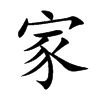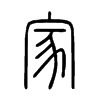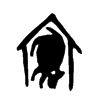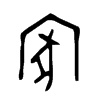Our theme image comes from the collection of the SALT Institute in Istanbul, Turkey (featured on their Flickr Stream) and dates back to 1924 and shows a powerful looking tractor at an International Agricultural Fair in Adana, Turkey. You can go wherever you want to with this image (and indeed with this tractor).
The lettering on the tractor caught my eye. It's so beautiful and graceful and looks like art. What's it doing on that machine? What does it say? John Deere? I tried to translate it but couldn't figure it out using the Turkish alphabet keys online.
The lettering on the tractor caught my eye. It's so beautiful and graceful and looks like art. What's it doing on that machine? What does it say? John Deere? I tried to translate it but couldn't figure it out using the Turkish alphabet keys online.
I've always enjoyed looking at foreign alphabets for the beauty of the letters, not necessarily for the meaning. In days of yore, before we left the country on a trip, we'd learn at least a few words of the native language where we were headed, for navigation purposes. But we don't have to do that anymore: If you have any trouble with translation, Google rescues you with little effort. A few feet of library space formerly occupied by language guides can now be reclaimed.
My husband speaks Chinese and can read and write Mandarin. Traveling in Asia with him has been immensely instructive and he's taught me many Chinese characters and how they are based on hieroglyphics. For instance, the character for home:
- The current Chinese character for "home" is written like this:
 .
. - The way of writing this character at Qin-shi-huang's time (1st Qin Dynasty Emperor, 259 B.C.) is:
 . You can see that its top part is obviously a house roof.
. You can see that its top part is obviously a house roof. - Then what is the thing in the house? Actually it is the charcter for "pig". See the way of writing this character in West Zhou Dynasty (1046 B.C.):
 . Oh, this is really a picture of a pig. So here you will understand the Chinese symbol meaning of the character "Jia"(home), which means a house with a pig inside. This was exactly the way of life in primitive period of one who had a home: having a shelter, and breeding some livestock.
. Oh, this is really a picture of a pig. So here you will understand the Chinese symbol meaning of the character "Jia"(home), which means a house with a pig inside. This was exactly the way of life in primitive period of one who had a home: having a shelter, and breeding some livestock. - The way of writing this character in the Inscriptions on Tortoise Shells and Bones is like this:
 .
.
An artist friend of ours who recently moved to Cambodia, painted Burmese numbers on his stairs. He and his partner converted an old building into a beautiful B and B, shop and bar - Bric-a-Brac, Battambang, Cambodia.
The numbers look beautiful on his stairs.
The numbers look beautiful on his stairs.
In Islam, it's forbidden to decorate places of worship with likenesses of living things. The way around this prohibition, and isn't there always a way around? is to make images out of writing. Calligrams are acceptable.
 |
| Horse - arabic alphabet |
The whirling dervish image, while stretching the permissible images made from writing to the limit, is a thing of beauty. And fits the theme - we saw the dervishes in Turkey.
Many times for Sepia Saturday I've used our old family photos with my father's writing on them in white ink. I found this one recently which I think fits the theme this week. The photo is so bad that I'm guessing my Dad thought it couldn't be any worse. I had to look twice to realize the hieroglyph was the date. May 2nd, 1949.
 |
Kids on Dominion Street. I'm the small one second from the left. My big sister is tallest of all on the right. A few years later, Linda whom Eilleen has her arm around in this photo, pushed me in the snow, beat me up and sat on me. No doubt I deserved what I got. Nevertheless, I came into the house, crying pitiably, "Linda beat me up!" Eilleen, a stickler for justice, took off her glasses, pulled on her coat, ran out the door, caught Linda, pushed her on the ground and shoved her snowy mitts in her mouth, telling her in the future to pick on somebody her own size. A truly heroic feat, I dare say it was the only act of violence she committed in her entire sweet life.
Motor on over to صپا صاترذاي for more stories with traction.
In case you haven't guessed, the link (I hope) is Turkish for Sepia Saturday. As far as I know we don't have any Turkish Sepians. If we do and I've written something terrible, please forgive me. My intentions were good. صپا صاترذاي
|





I’ve always been intrigued by Chinese characters and enjoyed learning a little more about them. I also enjoyed your images (especially the one of you and the other kids on Dominion Street), if you hadn't explained what the number was I would never have guessed. I’m going to take a closer look at all the old family photos now. I know some of them have odd numbers and letters written on the back – maybe I will be able to decipher them if I spend a little time on it.
ReplyDeleteI'd never thought of machinery being re-branded for countries using a different alphabet. Your site doesn't like me and won't accept my name, boundforoz
ReplyDeleteSorry about my rude and inhospitable site. Thanks for visiting anyway.
DeleteAnd not a tractor in sight. Yet on theme in the most interesting and fascinating way. I'll trust you on the Turkish "Sepia Saturday."
ReplyDeleteThere must have been tractors on my relatives farms. I don't believe they ever thought they were "photo-worthy".
DeleteVery interesting! Linda sounds like she was rather a meanie, I hope you got on better in later life. Sorry but your link back to Sepia Saturday doesn't work for me - perhaps it doesn't understand Turkish.
ReplyDeleteLinda was a good person. I'm sure I drove her to near madness as I did to everyone when I was that age. We were friends in later life. My sister probably should have punished me....I got off lucky on that one.
ReplyDeleteI love the Arabic calligraphy art. Megan's new mother-in-law uses this technique for her art. She grew up in Algeria and this is where she must have developed a love of the writing. When I was in France she gave me one of her art pieces. I'll show it to you next time we have lunch.
ReplyDeleteNancy
I love the calligraphy pictures.
ReplyDeleteA very interesting post. I don't think that I could ever learn to read the Chinese writing! The children must think English is easy in comparison!
ReplyDeleteI did learn the Arabic numbers by reading number plates while stuck in traffic in Cairo! (as they have the English translation on them).
Were you stuck in traffic long enough that the numbers stuck with you?
DeleteI love your photos and your breakdown of the Chinese characters, I had no idea that they are based on hieroglyphics, although it makes perfect sense when you think about it. The calligrams are really beautiful.
ReplyDeleteWhat a fun and educational post...not that tractors are all that beautiful, but necessary for feeding the bodies, while art and writing feed our souls!
ReplyDeleteWhat a fun post to read, Helen. I love the photo of you and the other girls and especially the story. Isn't it great when big sisters stand up for smaller ones?!
ReplyDeleteYes, it's one of my favorite memories of my sister because she was always sweet and kind to everyone...never picked a fight in her life. She was my hero from then on. I knew when the chips were down, I could always count on her in my corner.
DeleteThis was a very clever spin on the theme. I wondered about the Arabic script on that tractor too. The curves of Asian calligraphy make a fascinating contrast to European angled fonts.
ReplyDeleteAn interesting post. We're such a complicated world and the lack of a communal language makes it even more complicated.
ReplyDeleteRemember Esperanto?
DeleteI liked your different and rather unique take on this week's prompt! I, myself, often look for a different link to the prompt, so it's fun to see someone else do it. And yes - hooray for Google Translate! I write to a family in The Netherlands. They write & speak English well, but appreciate it when I write in Dutch (Nederlands). Years ago I had to rely on translation books & a battery operated pocket-sized translator, but they only translated word by word so it was rather slow going! Google makes it so much easier!
ReplyDelete